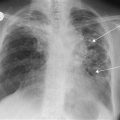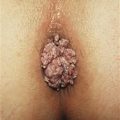Impotence
Impotence is failure in the adult male to sustain an adequate erection for vaginal penetration. Impotence leads to psychological problems, often with marital breakdown. Psychological causes of impotence are common but the most common organic disease is diabetes mellitus. The term ‘loss of libido’ should be reserved for sexual dysfunction relating from a loss of sexual desire or sexual drive.
Examination
Vascular
Check all the pulses in the lower limb. Listen for bruits in the abdomen and pelvis.
Neurological
Carry out a full neurological examination.
Endocrine
There will usually be a clear history of diabetes. Complications may be apparent. Check for peripheral neuropathy. Check for hypothyroidism: weight gain, dislike of cold weather, hoarse voice, lethargy, constipation. Check for Cushing’s syndrome – thin skin, cushingoid facies, abdominal striae, obesity, buffalo hump, hypertension. Check for Addison’s disease – weakness, weight loss, pigmentation of palmar creases and buccal mucosa, hypotension. Examine the testes for hypogonadism. Check for development of male secondary sexual characteristics.
Local painful conditions
Examine the penis for phimosis, Peyronie’s disease or short frenulum.
Systemic disease
Malignant disease may be obvious. Check for chronic renal failure: pallor of skin, peripheral oedema, pericarditis, pleural effusions, hypertension. Check for cirrhosis, liver palms, spider naevi, ascites, leuconychia, flapping tremor, testicular atrophy, Dupuytren’s contracture.
General Investigations
History and examination suggests the diagnosis in most cases.
■ FBC, ESR
Hb ↓ anaemia, e.g. chronic renal failure and malignancy. ESR ↑ malignancy.
■ U&Es
Creatinine raised in chronic renal failure.
■ Blood glucose
Diabetes mellitus.
■ TFTs
↑ TSH ↓ T4 in hypothyroidism.
■ Doppler studies
Peripheral vascular disease. Penile-brachial pressure index<0.6 suggests a vascular cause.
Specific Investigations
■ Nocturnal penile tumescence study
Erection versus no erection.
■ Intracorporeal injection of papaverine
If no abnormality of arterial inflow, this should cause an erection. If there is excessive venous leakage, the penis remains flaccid.
■ MRI or CT head
Pituitary abnormality.
■ Arteriography
May show vascular lesion, especially isolated narrowings of the internal iliac arteries.
■ Serum prolactin
Hypoprolactinaemia.
■ Serum testosterone
Low in hypogonadism.
■ Serum FSH and LH
Low in pituitary dysfunction.
■ ACTH stimulation test
Addison’s disease.




